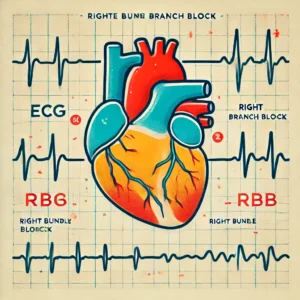Hyperkalemia is a medical condition where the level of potassium in the blood is too high. Potassium is an important mineral that helps your muscles, heart, and nerves work properly. However, too much potassium can be harmful, especially to your heart. One way doctors check for hyperkalemia is by using an ECG, which stands for electrocardiogram. An ECG measures the electrical activity of your heart and can show signs of hyperkalemia.
What is an ECG and How Does It Help?
An ECG is a test that records how your heart beats and how electrical signals move through it. It shows a line that goes up and down, which doctors can read to know if your heart is working well. For people with hyperkalemia, the ECG can look different from normal. By looking at the ECG, doctors can quickly figure out if the heart is affected by high potassium levels. This is very important because hyperkalemia can cause serious problems like heart failure if not treated.
How Potassium Affects the Heart
Potassium helps control the heart’s rhythm. When there is too much potassium, it makes it harder for the heart to send signals, causing the heart to beat slower or irregularly. This can be dangerous because the heart might stop beating properly. The ECG helps doctors find these irregular heartbeats early so they can take action to fix it.
Signs of Hyperkalemia on an ECG
When doctors look at an ECG, they search for certain signs that suggest hyperkalemia. Some of these signs include:
- Tall, Peaked T Waves: On the ECG, there is a wave called the T wave that represents the heart relaxing between beats. In hyperkalemia, the T wave becomes very tall and pointed, which is one of the most common signs.
- Widened QRS Complex: Another part of the ECG is the QRS complex, which shows how the heart’s lower chambers contract. When someone has hyperkalemia, this part of the ECG may get wider.
- Flattened P Waves: The P wave on an ECG shows the heart’s upper chambers contracting. In people with hyperkalemia, this wave may become flatter or disappear.
- Prolonged PR Interval: The PR interval is the time between the P wave and the QRS complex. Hyperkalemia can make this interval longer, which can affect how well the heart pumps blood.
These changes help doctors understand how serious the hyperkalemia is and whether it is affecting the heart.
Why Hyperkalemia Needs Quick Treatment
Hyperkalemia can be very dangerous if not treated right away. If potassium levels keep rising, the heart might stop working correctly, leading to serious heart problems or even death. That’s why it’s important to get medical help quickly if hyperkalemia is suspected. Doctors use the ECG as a fast way to check how the heart is doing, and if they find signs of hyperkalemia, they can start treatment to lower potassium levels and protect the heart.
What Causes Hyperkalemia?
There are several reasons why someone might have too much potassium in their blood:
- Kidney Problems: The kidneys help filter extra potassium out of the blood. If they aren’t working properly, potassium can build up.
- Medications: Some medicines, especially those for high blood pressure or heart failure, can raise potassium levels.
- Diabetes: People with diabetes, especially if their blood sugar isn’t well controlled, may have high potassium levels.
- Injury or Illness: Severe injuries, burns, or other health problems can cause potassium to leak out of cells into the blood.
Understanding what causes hyperkalemia is important so that doctors can figure out the best way to treat it.
Treatment Options for Hyperkalemia
Once doctors diagnose hyperkalemia through an ECG and blood tests, they will choose a treatment based on how severe the condition is. Some common treatments include:
- Medications: Some medicines help the body get rid of extra potassium. Others can protect the heart from the effects of high potassium while the body gets rid of it.
- Dialysis: For people with kidney problems, dialysis may be used to filter potassium out of the blood.
- Diet Changes: People with mild hyperkalemia may need to eat foods lower in potassium, like apples and bread, while avoiding foods like bananas and spinach that are high in potassium.
Prevention of Hyperkalemia
Preventing hyperkalemia is possible for people at risk by taking a few simple steps. This includes managing any health conditions that could lead to high potassium, such as kidney disease or diabetes. It’s also important to regularly check potassium levels if you take medications that might raise them. Following a low-potassium diet, if recommended by a doctor, can also help.
Conclusion:
Hyperkalemia is a serious condition that can affect your heart and body. An ECG is one of the fastest and most reliable ways for doctors to see if hyperkalemia is causing heart problems. By understanding what the ECG shows, doctors can quickly decide how to treat the condition. If you or someone you know is at risk of hyperkalemia, it’s important to recognize the signs and get medical help right away.













